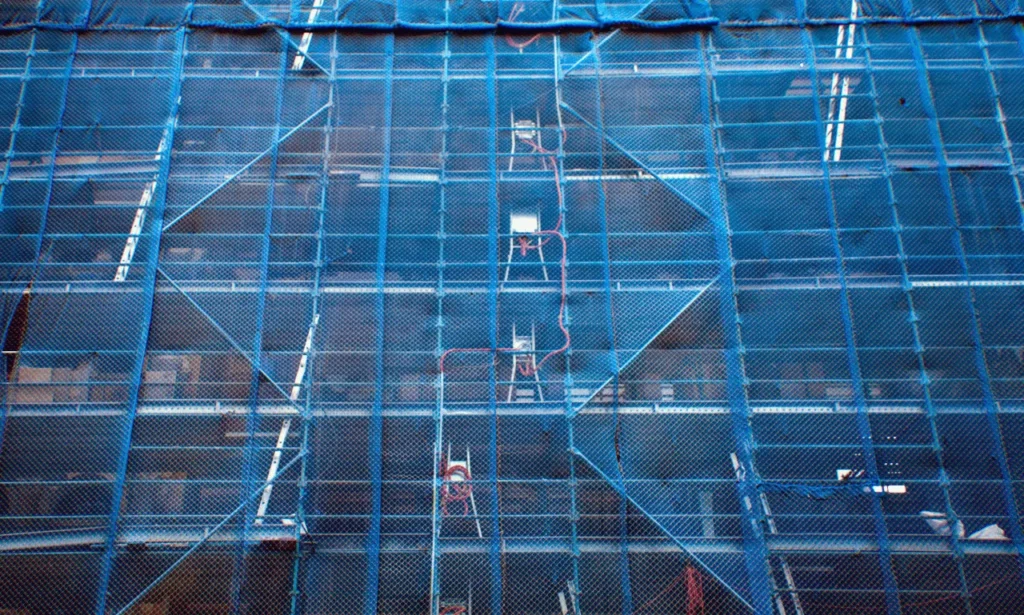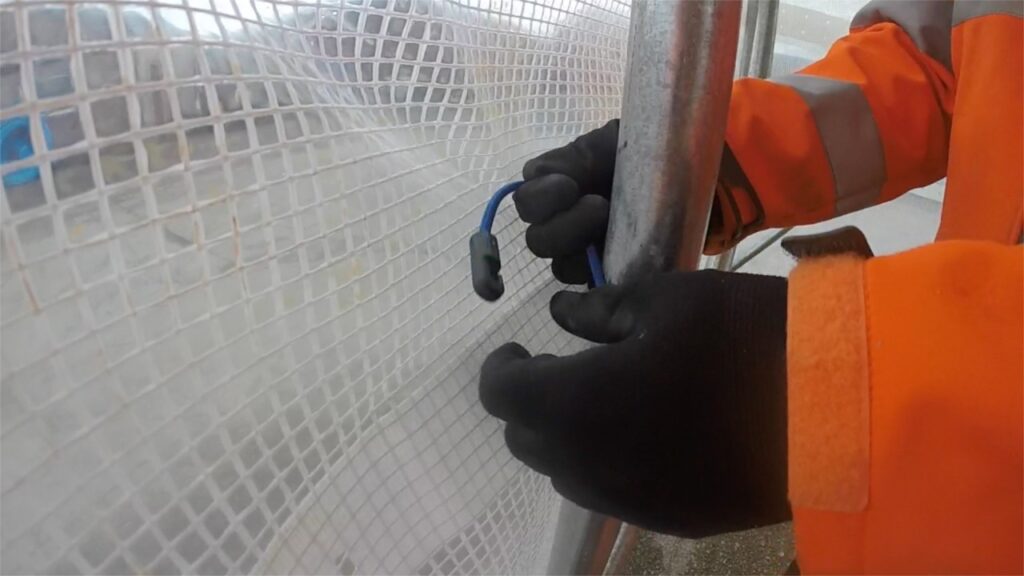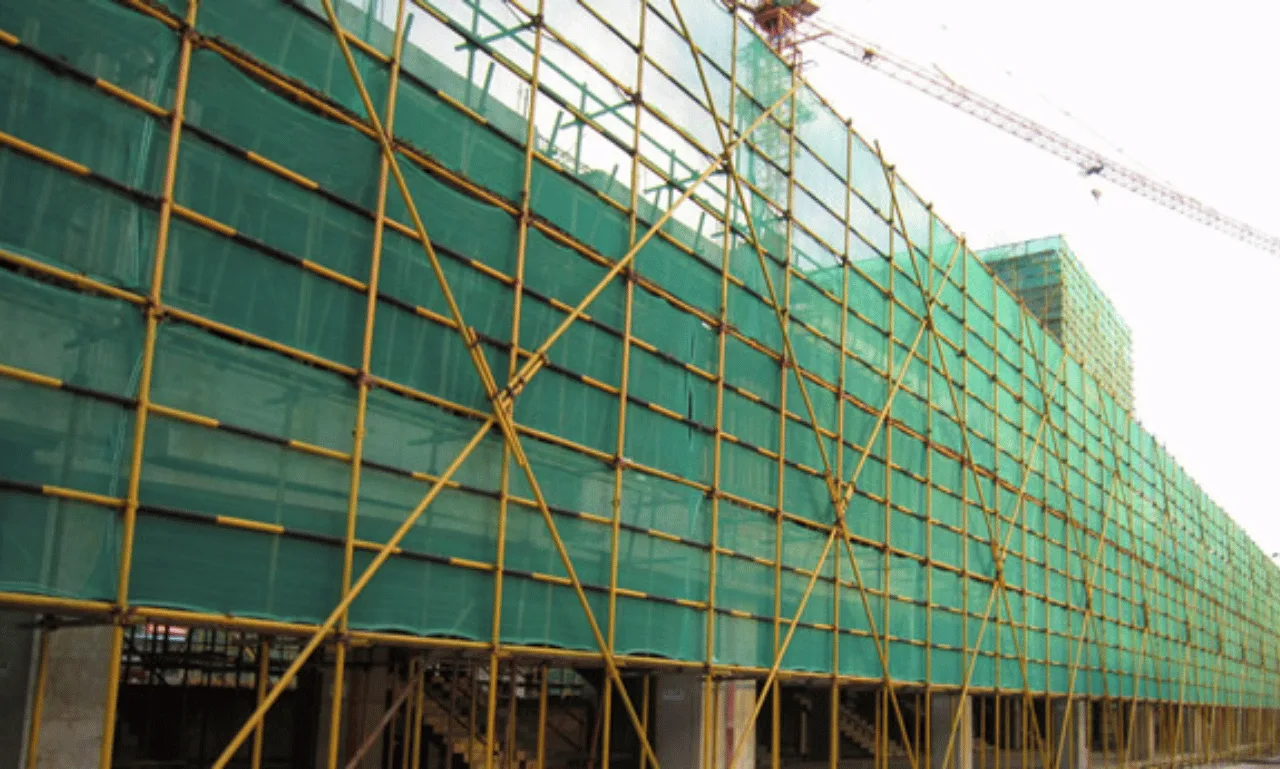Introduction to Scaffold Mesh
Scaffold mesh is an essential component in the construction industry, providing a protective barrier that enhances site safety and efficiency. As construction projects grow in complexity and scale, the need for reliable safety measures becomes increasingly vital. Scaffold mesh serves as a versatile solution, offering numerous benefits that contribute to a safer working environment.
This article explores the various advantages of scaffold mesh, focusing on its role in ensuring site safety, improving productivity, and enhancing overall project efficiency.
One of the primary functions of scaffold mesh is to prevent debris and tools from falling, which can pose a significant risk to workers and pedestrians alike. By creating a secure enclosure around scaffolding, it not only protects individuals on the ground but also helps in maintaining a tidy worksite, reducing the likelihood of accidents caused by loose materials. Furthermore, scaffold mesh is often designed to withstand harsh weather conditions, ensuring that it remains effective in providing safety even during adverse circumstances, such as high winds or heavy rain. This durability is crucial, as it allows construction teams to maintain their schedules without compromising safety.
Enhancing Site Safety
Safety is paramount on any construction site. The use of scaffold mesh significantly reduces the risk of accidents and injuries, protecting both workers and the public. Its robust design and material properties make it an effective safety measure.
In addition to its safety features, scaffold mesh also plays a pivotal role in enhancing productivity on construction sites. By minimising the risk of accidents and injuries, workers can focus more on their tasks without the constant distraction of potential hazards. Moreover, the use of scaffold mesh can streamline the workflow by allowing for easier movement of materials and equipment, as the mesh can be integrated with other scaffolding components. This seamless interaction not only saves time but also optimises the use of resources, ultimately leading to more efficient project completion. The visibility that scaffold mesh provides also aids in communication among team members, as it allows for clear sightlines across the site, facilitating better coordination and teamwork.

Protection from Falling Objects
One of the primary functions of scaffold mesh is to prevent tools, equipment, and materials from falling off scaffolding. This is particularly crucial in multi-storey constructions where the risk of injury to workers below is heightened. By acting as a barrier, scaffold mesh helps contain loose items, thereby minimising the likelihood of accidents.
Additionally, the visibility of scaffold mesh allows workers to be more aware of their surroundings, further enhancing safety. Brightly coloured mesh can serve as a visual warning, alerting personnel to potential hazards. The mesh can also be designed with reflective properties, ensuring that it remains visible even in low-light conditions, which is particularly beneficial for night-time operations or during inclement weather. This added visibility can be crucial in preventing accidents and ensuring that all personnel are fully aware of their environment.
Worker Safety and Security
Scaffold mesh also contributes to the safety of workers by providing a secure environment. It helps prevent falls from height, one of the leading causes of fatalities in the construction industry. By enclosing scaffolding, it offers an additional layer of protection, allowing workers to focus on their tasks without the constant worry of falling.
Furthermore, scaffold mesh can deter unauthorised access to construction sites, protecting both the site and the workers from potential threats. This added security is essential in maintaining a safe working environment. In addition to physical barriers, the use of scaffold mesh can also promote a culture of safety on-site. When workers see that their safety is prioritised through the use of effective measures like scaffold mesh, it can encourage them to adopt safer practices themselves. Regular training sessions on the importance of safety measures, coupled with the visible presence of scaffold mesh, can significantly enhance the overall safety culture within the construction team, leading to more conscientious behaviour and a reduction in accidents over time.
Read more at: Temporary Scaffolding Why It’s Crucial for Any Construction Project
Improving Project Efficiency
In addition to enhancing safety, scaffold mesh plays a crucial role in improving project efficiency. A well-organised and safe site can lead to increased productivity and smoother operations.

Streamlining Workflow
When scaffold mesh is properly installed, it creates a well-defined workspace that allows for better organisation. Workers can move freely and safely, reducing the time spent navigating around hazards. This streamlined workflow can lead to significant time savings, allowing projects to progress more swiftly.
Moreover, scaffold mesh can be customised to fit various site requirements, ensuring that it meets the specific needs of each project. This flexibility allows for efficient use of resources, further enhancing productivity. Learn more about productivity at https://www.bls.gov/k12/productivity-101/content/what-is-productivity/
Weather Protection
Construction projects are often subject to the whims of weather. Scaffold mesh can provide a degree of weather protection, shielding workers and materials from adverse conditions such as rain, wind, and dust. This protection can help maintain a consistent workflow, as workers are less likely to be hindered by environmental factors.
By minimising weather-related disruptions, scaffold mesh contributes to the timely completion of projects, ensuring that deadlines are met without compromising safety.
Cost-Effectiveness of Scaffold Mesh
Investing in scaffold mesh can lead to significant cost savings in the long run. While the initial outlay may seem considerable, the benefits it offers can outweigh these costs.
Reducing Accident-Related Costs
Accidents on construction sites can lead to costly repercussions, including medical expenses, legal fees, and project delays. By implementing scaffold mesh, the likelihood of accidents is reduced, thereby minimising these potential costs. A safer site not only protects workers but also safeguards the financial interests of the project.
Furthermore, insurance premiums may decrease as a result of improved safety measures, leading to additional savings for construction companies.
Minimising Material Waste
Scaffold mesh can also help minimise material waste, as it prevents materials from falling and becoming damaged. This preservation of resources can lead to lower material costs and a more efficient use of supplies. By protecting valuable materials, scaffold mesh ensures that projects remain within budget and reduces the environmental impact of waste. Click here to find more about damaged.
Compliance with Regulations
Adhering to safety regulations is a critical aspect of any construction project. Scaffold mesh helps companies comply with local and national safety standards, ensuring that they meet legal requirements.
Meeting Health and Safety Standards
Regulatory bodies often mandate specific safety measures on construction sites, and scaffold mesh is frequently included in these requirements. By using scaffold mesh, companies demonstrate their commitment to health and safety, which can enhance their reputation and credibility within the industry.
Compliance with safety regulations not only protects workers but also mitigates the risk of legal issues, further safeguarding the interests of the company.
Enhancing Public Perception
In an era where corporate social responsibility is increasingly valued, demonstrating a commitment to safety can enhance public perception. Companies that prioritise the safety of their workers and the public are often viewed more favourably, which can lead to increased business opportunities and partnerships.
Utilising scaffold mesh effectively showcases a company’s dedication to maintaining a safe working environment, reinforcing its reputation as a responsible and reliable entity in the construction industry.
Conclusion
The benefits of scaffold mesh in ensuring site safety and efficiency are undeniable. From protecting workers and the public to improving project workflow and compliance with regulations, scaffold mesh serves as a vital tool in the construction industry. Its cost-effectiveness and versatility further enhance its appeal, making it an indispensable component of modern construction practices.
As construction projects continue to evolve, the importance of prioritising safety and efficiency will only grow. Implementing scaffold mesh is a proactive step towards creating a safer, more productive work environment, ultimately leading to successful project outcomes.

